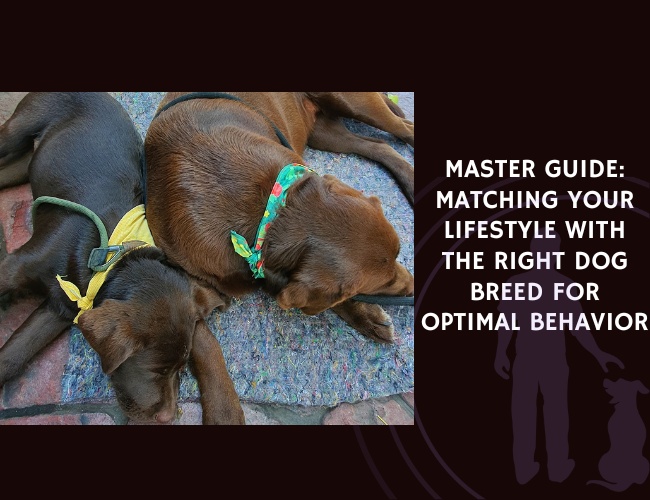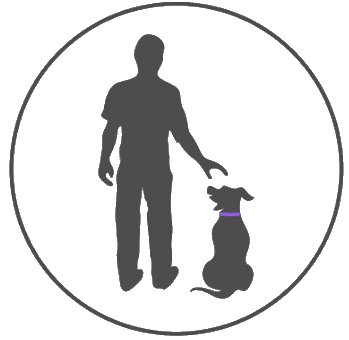Understanding the Human-Dog Bond
The Two-Way Relationship Between Dogs and Owners
The relationship between dogs and their owners is a dynamic, two-way street. Just as dogs are capable of adapting to their human companion’s lifestyle, owners often adjust their routines and habits to better suit their pets. This mutual influence strengthens the bond and improves the well-being of both parties.
Dogs are incredibly adaptable animals. They can adjust their behavior to align closely with their owner’s lifestyle. For example, if you are an active person who enjoys regular outdoor activities, your dog is likely to become more energetic and enthusiastic about outdoor play. On the flip side, if you have a more reserved lifestyle, your dog may become more relaxed in line with your habits.
Owners also make changes for the sake of their dogs. You might find yourself going on more walks or spending more time playing fetch in the park. This mutual adaptation creates a balance that fosters understanding and companionship.
How Dogs Adapt to Owner Lifestyles
Dogs have a unique ability to adapt to various lifestyles, making them versatile companions. The adaptability of your dog can be influenced by your daily activities, routine, and the emotional environment you provide.
Active Lifestyle: Dogs with active owners tend to be calmer and well-behaved. Regular physical and mental stimulation, such as walking, running, or play sessions, helps expend their energy and keeps them content.
Sedentary Lifestyle: If an owner’s lifestyle is more sedentary, a dog might experience boredom. This can lead to hyperactivity or destructive behaviors such as chewing or digging. It’s essential, therefore, to provide adequate mental and physical stimulation to prevent such issues.
A stable routine is vital for dogs. Consistent schedules for feeding, exercise, and play can reduce anxiety and promote good behavior. Conversely, erratic schedules can cause stress and result in negative behaviors like excessive barking or house soiling.
Do Dogs Adjust to Your Lifestyle?
Dogs are incredibly adaptable creatures, capable of adjusting their behavior and routines to align with the lifestyle of their owners. This adaptability is a key reason why dogs make such excellent companions across diverse living situations. When you bring a dog into your home, they begin to observe and learn from your daily habits, gradually syncing their activities with yours. For instance, if you have a structured routine with regular exercise, your dog will likely become accustomed to these activities, eagerly participating in walks or play sessions. Conversely, if your lifestyle is more relaxed, your dog may mirror this by enjoying quieter moments and less intense activities.
The process of adjustment is not instantaneous; it requires time and patience as your dog learns to navigate their new environment and understand your expectations. During this period, it’s essential to maintain consistency in feeding, exercise, and socialization schedules to help your dog feel secure and reduce anxiety. Over time, as your dog becomes more familiar with your lifestyle, you’ll notice a harmonious balance where both you and your pet thrive together. This mutual adaptation strengthens the bond between you and your dog, enhancing the overall quality of life for both parties.
Moreover, the emotional connection between dogs and their owners plays a significant role in how well a dog adjusts to a new lifestyle. Dogs are highly perceptive and can sense changes in their owner’s mood and stress levels. By fostering a positive and calm environment, you can facilitate a smoother transition for your dog, ensuring they feel safe and loved. This emotional synchrony not only aids in their adjustment but also contributes to a deeper, more fulfilling relationship between you and your canine companion.
Dogs Develop Similar Personalities to Their Owners
The fascinating dynamic between dogs and their owners often leads to the development of similar personality traits. This phenomenon, known as emotional mirroring, is a testament to the deep bond shared between humans and their canine companions. Dogs are highly perceptive creatures, capable of picking up on subtle cues from their owners’ behavior and emotional states. As a result, they often mirror these traits, leading to a synchronization of personalities over time.
Research has shown that dogs tend to reflect the emotional environment provided by their owners. For instance, an owner who is calm and composed may find that their dog exhibits a more relaxed demeanor. Conversely, an energetic and outgoing owner might have a dog that is equally lively and enthusiastic. This mirroring effect not only strengthens the bond between the two but also enhances the overall well-being of both parties. By understanding this connection, owners can foster a positive environment that encourages desirable behaviors in their pets.
Moreover, the alignment of personalities between dogs and their owners can significantly impact training and socialization outcomes. Dogs that share similar temperaments with their owners are often easier to train, as they respond better to familiar cues and routines. This mutual understanding creates a harmonious relationship where both the dog and the owner thrive. Recognizing and nurturing this bond is essential for ensuring a fulfilling and rewarding companionship.
Emotional Synchrony and Mirroring Between Dogs and Owners
Emotional synchrony is another fascinating aspect of the human-dog bond. Dogs are highly perceptive and can mirror their owner’s emotions. If you are stressed, your dog might sense it and display signs of anxiety or restlessness.
Research shows that stress levels in dogs can be tied to their owner’s emotional state. Increased cortisol levels in stressed owners can lead to elevated cortisol levels in their dogs too, which may cause health issues and behavioral changes.
Emotional Environment: Dogs are sensitive to the emotional atmosphere in their home. High-stress environments can lead to anxious or reactive behaviors in dogs, which may manifest as growling, hiding, or even aggression.
Positive Reinforcement: Training methods that use positive reinforcement help establish trust and nurture good behavior in dogs. Inconsistent or punitive training practices, on the other hand, can lead to fear, confusion, and aggression.
Social Interaction: Regular socialization with other dogs and people is crucial for a dog’s confidence and friendliness. Isolation and lack of social interaction can result in fearfulness or aggressive behaviors.
Understanding the mutual influence in your relationship with your dog and being mindful of the emotional exchange are key to fostering a strong, positive bond. Your next steps in this journey should involve evaluating your lifestyle to ensure it aligns well with the needs of your potential or current canine companion. This will set a solid foundation for a happy, well-behaved dog and a fulfilling human-dog relationship.
Assessing Your Lifestyle
Evaluating Your Activity Level and Daily Schedule
Understanding your lifestyle is crucial for choosing the right dog breed. It begins by evaluating your activity level and daily schedule. Are you someone who loves outdoor adventures, spending time hiking, or jogging? Or do you prefer more indoor and relaxed activities? If you lead an active lifestyle, a high-energy dog might be the perfect companion. Breeds like Border Collies and Retrievers, for example, thrive on dynamic activities and will become your perfect workout buddy. If your days are more laid-back, breeds such as Bulldogs and Basset Hounds might better suit your pace. Engaging with a dog that matches your activity levels ensures a harmonious relationship and contributes to your dog’s overall well-being.
When evaluating your daily schedule, consider the time you spend at home versus work or social commitments. A demanding job might mean your dog will spend significant time alone. This can lead to separation anxiety and other behavioral issues. Make sure you account for time dedicated to exercise, training, and socialization, as these elements are critical for your dog’s mental and physical health.
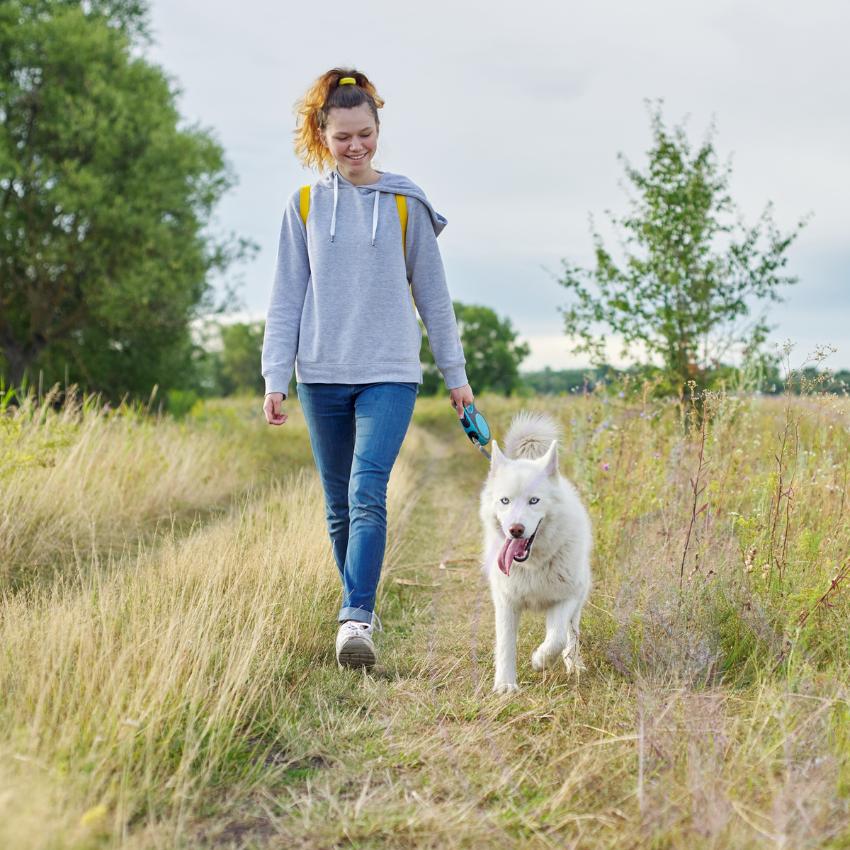
Considering Your Emotional Environment and Stress Levels
Your emotional environment greatly influences your dog’s behavior. Dogs are highly empathetic and can mirror your emotions—a phenomenon known as emotional synchrony. If you often feel stressed or anxious, these feelings may transfer to your dog, causing them to exhibit similar symptoms. Research indicates that elevated stress levels in owners correlate with higher cortisol levels in dogs, contributing to anxiety-related behaviors.
Take a moment to assess your emotional landscape. If stress is a constant in your life, adopting stress management techniques can benefit both you and your dog. Practices like mindfulness or regular physical activities not only help you but also create a calmer environment for your furry friend.
Analyzing Available Time for Training and Socialization
Training and socialization are not one-time tasks but ongoing requirements that demand your time and patience. Think about how much time you can realistically devote to these activities. Positive reinforcement training is essential for building trust and encouraging good behavior, and it requires consistency and dedication. If your schedule is frequently erratic, your dog may struggle with anxiety and other behavioral issues due to the lack of routine.
Interaction with other dogs and people is equally important. Socialization helps your dog learn to behave confidently and appropriately in different environments. It can’t be overstated how significant this is for preventing fearfulness or aggression later on.
Assessing your lifestyle isn’t just about whether you have enough space for a dog. It encompasses your energy levels, daily habits, emotional stability, and commitment to the ongoing care and training your future pet will need. Taking the time to reflect on these aspects ensures a positive, long-lasting bond with your new companion. Investing effort in this initial evaluation sets the stage for a rewarding relationship with your dog.
By thoroughly understanding your lifestyle, you set up a solid foundation for the next steps, ensuring you and your future dog enjoy a harmonious life together.
Breed Characteristics and Compatibility
Understanding High-Energy vs. Low-Energy Breed Requirements
When choosing a dog, it is crucial to understand the energy levels of different breeds and how they align with your lifestyle. High-energy breeds, such as Border Collies and Retrievers, need substantial physical and mental stimulation. They thrive in environments where they can engage in rigorous activities like running, hiking, and playing fetch. These breeds are akin to athletes; they need their “workouts” to stay happy and healthy. If you lead an active lifestyle, a high-energy breed may be an excellent match.
On the other hand, low-energy breeds like Bulldogs and Basset Hounds are perfect if you prefer a more relaxed pace. These breeds enjoy short, gentle walks and plenty of lounging time. They are low-maintenance in terms of exercise but can be equally affectionate and supportive. Assessing your activity level is the first step in making an informed decision that benefits both you and your future pet.
Matching Breed Traits with Your Activity Level
Matching a dog’s breed traits with your activity level ensures a harmonious relationship. If you enjoy outdoor activities and have a high-energy lifestyle, consider breeds like Retrievers, Collies, or Terriers, known for their endurance and agility. These breeds will not only keep up with you but also complement your active routines, promoting mutual well-being.
Conversely, if your daily routine is more sedentary, breeds such as Pugs, French Bulldogs, or Cavalier King Charles Spaniels might be more suitable. These dogs are content with minimal exercise and enjoy cozying up on the couch. Choosing a breed that matches your energy level helps prevent problems like behavioral issues resulting from unmet exercise needs and ensures that your pet thrives in your home.
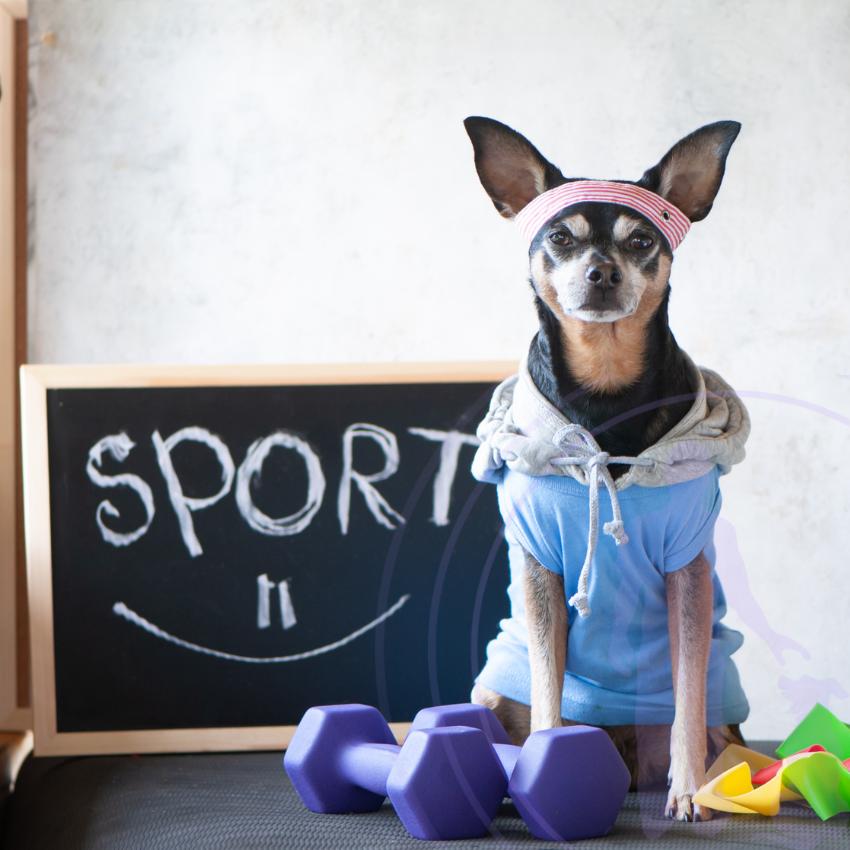
Considerations for Apartment Living vs. House with Yard
Another critical aspect of breed compatibility is your living environment. Apartment dwellers should consider breeds that adapt well to smaller spaces and require less outdoor time. Breeds like Dachshunds, Shih Tzus, and Boston Terriers are known to do well in apartments. They are generally quieter and have lower exercise demands.
On the flip side, if you live in a house with a yard, you have the flexibility to choose from a wider range of breeds, including those that benefit from regular outdoor activity. Breeds such as Labrador Retrievers, Australian Shepherds, and Golden Retrievers will appreciate the extra space to roam and play. A yard provides an excellent environment for high-energy dogs to exercise and explore safely.
Understanding the specific needs and characteristics of different dog breeds in relation to your living conditions and lifestyle is vital for a fulfilling and rewarding pet ownership experience. By making an informed choice, you ensure a happy and healthy life for both you and your dog, paving the way for a strong bond and a mutually beneficial relationship.
As we move forward, remember that your attention to breed-specific requirements and compatibility is laying the groundwork for a successful and harmonious life with your new furry friend.
Daily Routines and Time Commitment
Creating Consistent Schedules for Feeding and Exercise
Consistency is key when it comes to raising a well-behaved and emotionally balanced dog. Dogs thrive on routine as it provides them with a sense of security and predictability. A stable daily schedule for feeding and exercise can significantly reduce anxiety and encourage positive behavior in your dog.
- Feeding: Aim to feed your dog at the same times every day. This regulates their digestive system and helps prevent any stress-related behaviors, such as house soiling or excessive barking.
- Exercise: Consistent exercise is essential to keep your dog physically and mentally stimulated. High-energy breeds require more vigorous activities, while low-energy breeds may be content with gentle walks. Regular outings not only release pent-up energy but also offer mental engagement through new sights and smells.
Ensure that your schedules accommodate work commitments and other household activities. Consistency in your dog’s routine can support a harmonious household environment.
Planning for Regular Training and Socialization Activities
Training and socialization are critical aspects of your dog’s overall well-being. Regular training sessions reinforce good behavior and build trust between you and your dog. Using positive reinforcement techniques, such as treats and praise, can foster a positive learning environment for your pet. Avoid punitive or inconsistent methods, as they can lead to fear, confusion, and even aggression.
- Training: Dedicate time each day for short training sessions. It keeps your dog mentally stimulated and reinforces their learning. Training can include basic commands like sit, stay, and come, as well as more advanced tricks as your dog progresses.
- Socialization: Regular exposure to different people, environments, and other dogs helps your dog develop confidence and reduce fearfulness or aggression. Enroll your dog in socialization classes, arrange playdates with other dogs, or simply take them to different parks to meet new friends.
Planning and sticking to these activities will cultivate a well-rounded and socially adept dog.
Accommodating Work Schedules and Alone Time
Balancing work schedules with your dog’s needs can be challenging, but it’s essential for your dog’s happiness and your own peace of mind. Dogs left alone for extended periods may suffer from separation anxiety, leading to destructive behaviors such as excessive barking, chewing, or attempts to escape.
- Time Alone: If you have a demanding job, consider doggy daycare services, hiring a dog walker, or setting up playdates. These options provide your dog with the necessary interaction and exercise when you are unavailable.
- Enrichment Activities: Make alone time less stressful by preparing enrichment activities, such as puzzle toys or chew items that can keep your dog occupied and mentally engaged. Background noise, like a radio or TV, can also create a comforting environment in your absence.
Striking a balance between your work life and your dog’s needs ensures that neither aspect is neglected. With thoughtful planning and consistency, you can create a routine that supports your dog’s well-being and your lifestyle.
By focusing on these elements, you set the foundation for a positive and enriching relationship with your dog. Regular review and adjustments will help maintain this balance as both your lives evolve.
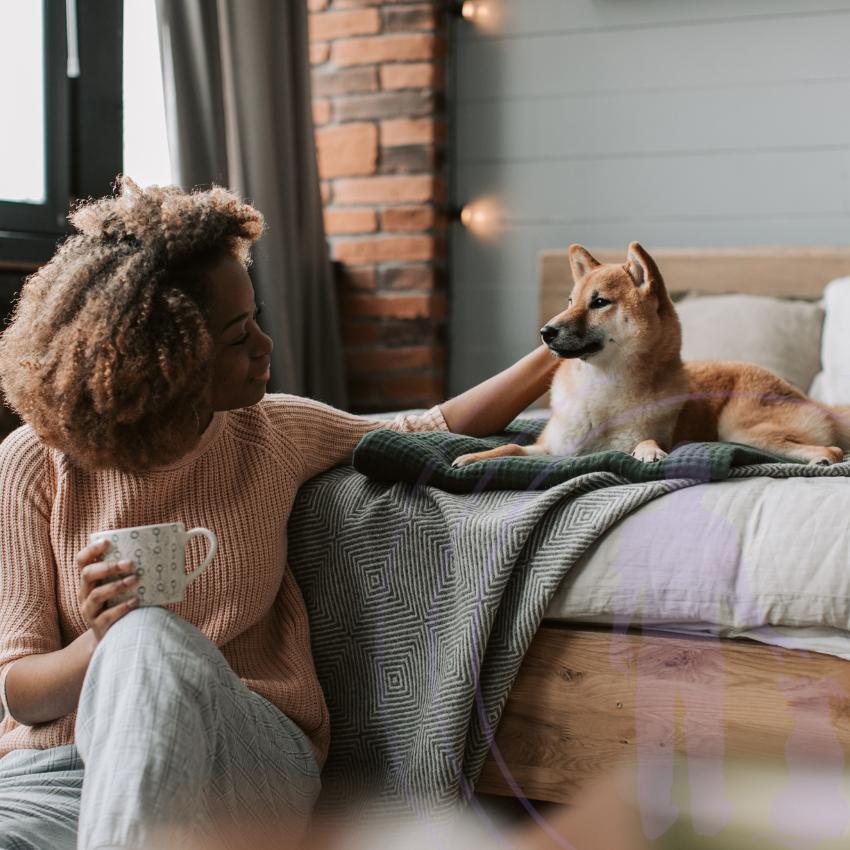
Training and Behavioral Expectations
Importance of Positive Reinforcement Training
Training is a vital aspect of fostering a well-behaved and emotionally balanced dog. Positive reinforcement training, which involves rewarding desired behaviors with treats, praise, or toys, is crucial for building trust and encouraging good behavior in dogs. This method contrasts with punitive or inconsistent training methods, which can lead to fear, confusion, and aggression in dogs. By consistently using positive reinforcement, you create a supportive environment that fosters learning and strengthens the bond between you and your dog.
A stable daily schedule, such as regular feeding, exercise, and play times, can provide a sense of security for your dog, reducing anxiety and promoting good behavior. When dogs know what to expect, they feel more in control, which helps minimize stress-related behaviors. It’s important to stay patient and consistent, rewarding positive behaviors and ignoring or redirecting unwanted actions.
Recognizing Signs of Stress and Behavioral Issues
Dogs, like humans, can experience stress for various reasons. Recognizing the signs of stress and behavioral issues early on can help you address them before they become deep-rooted problems. Common signs of stress in dogs include excessive barking, destructive behavior (like chewing or digging), growling, hiding, and house soiling. Elevated stress levels in owners can also transfer to dogs, leading to increased cortisol levels and anxiety-related behaviors.
High-stress environments can exacerbate these issues. For example, a chaotic household may lead to heightened aggression or reactivity in dogs. Understanding canine body language and stress signals will help you provide the necessary support and adjustments to keep your dog calm and secure. This might include ensuring a stable emotional environment, offering mental and physical stimulation, and maintaining a consistent routine.
Commitment to Ongoing Socialization
Socialization is an essential part of your dog’s well-being. Regularly introducing your dog to new people, places, and other dogs helps them build confidence and reduces the likelihood of fear-based aggressive behaviors. Dogs that are well-socialized tend to be friendlier and more adaptable to different situations. A lack of socialization, on the other hand, can lead to fearfulness or aggressive behaviors, particularly toward unfamiliar people or animals.
Regular interaction is key. Plan activities where your dog can meet new friends and experience different environments. Puppy classes, dog parks, and pet-friendly events are great opportunities for socialization. Remember, socialization should be a positive experience for your dog, so always use positive reinforcement to reward calm and friendly behavior.
The journey with your dog is a continuous learning process for both of you. By staying committed to positive reinforcement training, understanding the signs of stress, and ensuring ongoing socialization, you can foster a rewarding and harmonious relationship with your four-legged companion.
Making Lifestyle Adjustments
Understanding that owning a dog is a dynamic and evolving journey is essential for maintaining a harmonious relationship. Adjusting your lifestyle to accommodate your dog’s needs involves modifications to daily routines, creating an enriching environment, and balancing work and pet responsibilities.
Modifying Daily Routines to Accommodate Your Dog
Dogs thrive on consistency and predictability, so adjusting your daily routine to include regular feeding, exercise, and playtime is crucial.
Feeding and Exercise Schedule
Consistency in feeding times helps regulate your dog’s digestion and energy levels. Exercise should be included at regular intervals throughout the day, tailored to your dog’s breed and energy levels.
- Morning: A morning walk or play session sets a positive tone for the day, providing both mental and physical stimulation.
- Mid-day: If possible, a mid-day activity or interaction, such as a brief play session or outdoor break, can prevent boredom.
- Evening: An evening walk helps burn off any remaining energy, ensuring your dog is calm and relaxed before bedtime.
Training and Socialization Time
Allocate specific times for training and socializing your dog. Consistent short training sessions using positive reinforcement will build good behaviors, while planned social interactions with other dogs or people can foster confidence and reduce anxiety.
Creating an Enriching Environment
An enriching environment engages your dog mentally and physically, reducing the likelihood of stress and undesirable behaviors such as chewing or digging.
Interactive Toys and Puzzles
Provide toys that challenge your dog’s mind. Puzzle toys that dispense treats can keep your dog engaged and stimulated, turning meal times into mentally taxing activities.
Designated Play Areas
Set up safe areas within your home where your dog can play and explore freely. Including a variety of textures, toys, and objects within these spaces can make the environment more engaging.
Outdoor Exploration
Regular opportunities for outdoor exploration can significantly enrich your dog’s life. Whether it’s a walk around the neighborhood or a trip to the local park, these experiences introduce new sights, sounds, and smells, contributing to your dog’s overall well-being.
Balancing Work and Pet Responsibilities
Balancing work commitments with pet care requires thoughtful planning and consistency to ensure your dog’s needs are met even when you are busy.
Managing Alone Time
For owners with demanding work schedules, managing the time your dog spends alone is critical. Dogs left alone for long periods can experience separation anxiety. Strategies to manage alone time include:
- Doggy Daycare: Enrolling your dog in daycare can provide social interaction and mental engagement while you are at work.
- Pet Sitters: Hiring a pet sitter to visit during the day can provide companionship and care.
- Interactive Devices: Devices that allow you to interact with your dog remotely, like pet cameras with treat dispensers, can offer comfort and engagement.
Creating a Safe Space
Ensure your dog has a safe and comfortable space where they feel secure when you are not home. This might be a cozy corner with their bed, favorite toys, and access to water.
Integrating Work and Pet Care
For remote workers, integrate pet care into your day. Brief breaks to play or cuddle with your dog can enhance both your productivity and your dog’s happiness.
By making these lifestyle adjustments, you can create a balanced and enriching environment that meets your dog’s needs while also managing your own responsibilities. Maintaining this harmony will help strengthen the bond between you and your furry companion, fostering a happy and healthy relationship that can adapt as both your lifestyles evolve.
Long-term Success Strategies
Regular Assessment of the Human-Dog Relationship
To ensure the long-term success of your relationship with your dog, it’s essential to regularly assess the bond you share. Dogs are remarkably adaptable creatures, and their behavior often reflects their owner’s lifestyle. Regular assessment helps you understand and address any emerging issues related to your dog’s behavior and overall well-being.
- Observe Behavior Changes: Keep an eye on any changes in behavior, such as increased anxiety, aggression, or lethargy. These can be indications of stress or unmet needs.
- Check Emotional Synchrony: Pay attention to how your dog’s mood mirrors yours. Dogs can sense and reflect your emotions, so managing your stress can positively impact their behavior.
- Evaluate Routine Adjustments: Assess how well your current routine supports your dog’s needs. Consistency in feeding, exercise, and playtime is crucial for a stable and secure environment for your dog.
Maintaining Consistent Exercise and Training Routines
Exercise and training are cornerstones of a well-balanced dog. Maintaining consistent routines can significantly enhance their physical and mental well-being.
- Daily Exercise: High-energy breeds require substantial physical activity, while low-energy breeds may need less but still frequent exercise. Adjusting the type and duration of exercise to suit your dog’s breed and energy level helps prevent boredom and related destructive behaviors.
- Regular Training: Consistent training sessions using positive reinforcement methods (treats, praise) help build trust and encourage good behavior. Training should be in short, fun sessions to maintain your dog’s interest and enthusiasm.
Adapting to Changing Lifestyle Needs
As life evolves, so do the needs of both you and your dog. Adapting to these changes is crucial for long-term harmony.
- Flexible Schedules: Adjust your schedules to accommodate any changes in your lifestyle, such as a new job, relocation, or family expansion. Ensuring your dog still gets the attention and care they need is vital for maintaining their well-being.
- Environment Enrichment: Continuously seek ways to enrich your dog’s environment. Interactive toys, new socialization opportunities, and varied activities keep your dog engaged and mentally stimulated.
- Behavior Monitoring: Stay alert to any signs of stress or anxiety, which can arise from lifestyle changes. Early recognition allows for timely interventions and adjustments.
Balancing the needs of your dog with your own lifestyle is an ongoing process. Regularly assessing your relationship, maintaining consistent routines, and adapting to changing needs are the keys to a happy, healthy, and harmonious life with your dog.

